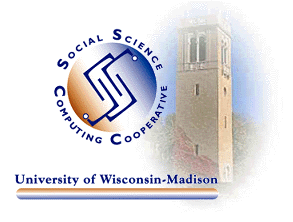
Summer Training Schedule
SAS Version 8 Documentation Available On-Line
Software Upgrades on WinCenter
Use Fewer Attachments and Reduce Your Risk of Viruses
| Date | Time | Topic | Room | Instructor |
| 6/22 | 2:00-3:30 | A Hands-On Introduction to UNIX | 2470 | Bongert |
| 6/27 | 10:00-11:30 | WordPerfect Basics | 3218 | Clear |
| 6/27 | 1:30-3:00 | Configuring Your Mailer for IMAP | 2470 | Wald |
| 6/28 | 2:00-3:30 | Getting Started with EXCEL | 3218 | Brauer |
| 7/12, 19, 26 | 10:00-11:00 | A Hands-On Introduction to SAS on Unix (3 days) | 2470 | McDermott |
| 7/18 | 10:00-11:30 | WordPerfect Tips and Tricks | 3218 | Clear |
| 7/25 | 10:00-11:30 | Getting Started with ACCESS | 3218 | Brauer |
| 8/1 | 1:30-2:30 | Listar for List Owners | 2470 | Wald |
SSCC has set up a filter to check all incoming and outgoing mail that passes through our mail server. This filter checks all attachments for certain features, and removes any code that could contain a virus. The filter checks for certain files and file extensions that have contained viruses that have circulated so far, and we can add to it if new viruses make it necessary. This filter has stopped several different viruses since we began using it a few weeks ago.
A good way to keep email moving smoothly, and minimize the chances of activating a virus, is to be careful with attachments. Don't open them automatically, make sure they're referred to in the text of the mail, and look at the icon to see what sort of file it is. Consider if there is anything you can do to reduce the number of attachments in email. Shorter messages can be copied and pasted into the body of the message itself. If you and the others who need to see the document have shared network space, leave the document there, and just use the email message to tell people about the location. Otherwise, use FTP, particularly with large documents. If there are fewer email attachments, we are all more likely to think about them before opening them, and will be less likely to release a virus unintentionally.
Go to previous editions of
SSCC News .
Go to the SSCC Home Page.
© 2000 University of Wisconsin Social Science Computing Cooperative